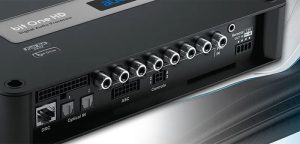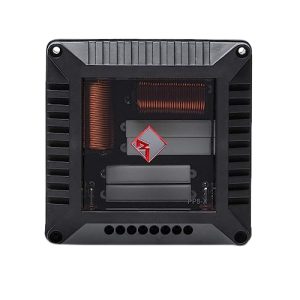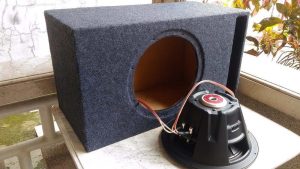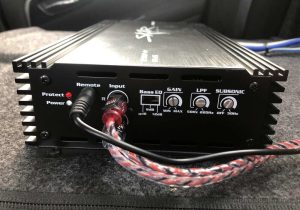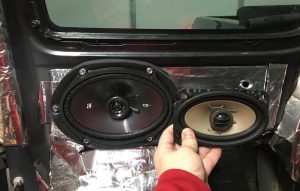You’re jamming on your guitar through your favorite amp when suddenly you notice something’s off. That crystal-clear tone you love has been replaced by an unwelcome fuzzy sound that’s ruining your playing experience. Don’t worry—you’re not alone in this frustrating situation.
Amplifiers develop fuzzy or distorted sounds for numerous reasons, ranging from simple connection issues to more complex electronic problems. The good news? Many of these issues can be identified and fixed without expensive professional help.
In this comprehensive guide, we’ll walk through every possible cause of that annoying fuzzy sound coming from your amp and provide practical solutions to get your gear sounding pristine again.
Contents
Common Causes of Fuzzy Amp Sound
Bad Cables and Connections
One of the first things to check when your amp starts sounding fuzzy is your cable setup. Guitar cables take a beating through regular use, and damaged cables are often the culprit behind unwanted noise.
Signs of cable problems:
- Sound cuts in and out when you move the cable
- Crackling noise when the cable connects to input jacks
- Visible damage on the cable’s exterior
- Bent or damaged connector tips
How to fix it: Try swapping your current cable with a new one to see if the fuzzy sound disappears. Pay special attention to the connection points—make sure plugs are inserted fully into jacks on both your guitar and amplifier. Sometimes, simply wiggling and reseating the connections can resolve intermittent issues.
Quality matters with cables. Budget cables often use thinner wire and lower-quality shielding that can pick up interference. Investing in a well-made cable with proper shielding will not only reduce unwanted noise but also last much longer.
Dirty or Corroded Input Jacks
Over time, input jacks on both your guitar and amplifier can accumulate dust, dirt, and oxidation. This buildup creates resistance in the signal path, resulting in a fuzzy or static-like sound.
How to fix it:
- Turn off and unplug your amp completely
- Spray electronic contact cleaner into the input jack
- Insert and remove a cable several times to work the cleaner around
- Let it dry completely before reconnecting your equipment
For persistent problems, you might need to open up your amp or guitar (if you’re comfortable doing so) to clean the jacks more thoroughly or tighten any loose connections.
Failing or Dirty Tubes
If you own a tube amplifier, worn or faulty tubes are a common source of fuzzy sound. Tubes have a limited lifespan and gradually deteriorate with use.
Signs of tube problems:
- Excessive hiss or hum
- Inconsistent volume
- Strange visual appearance (white spots, glowing red plates)
- Microphonic feedback (tapping the amp causes ringing)
How to fix it:
- Power down your amp and let tubes cool completely
- Carefully remove the tubes one by one (they can be fragile)
- Look for visible damage or darkening
- Clean tube pins with fine sandpaper or contact cleaner
- Consider replacing older tubes, especially if it’s been years since the last change
Many guitar players replace tubes as regular maintenance every 1-2 years depending on usage. Power tubes typically wear out faster than preamp tubes, so knowing which tubes to replace can save you money.
Incorrect Settings or Gain Staging
Sometimes the fuzzy sound isn’t a technical problem at all—it could be related to your amp settings. Modern amps offer countless tone-shaping options, and certain combinations can create undesirable sounds.
Settings that commonly cause fuzziness:
- Too much gain or distortion
- Extreme EQ settings (particularly boosted treble)
- Effects loop issues
- Improper gain staging between pedals and amp
How to fix it:
- Reset your amp to neutral settings (set all EQ controls to 12 o’clock)
- Gradually increase volume and gain to find where the fuzziness begins
- If using pedals, try connecting your guitar directly to the amp to isolate the issue
- Check that volume levels match between different channels if your amp has multiple inputs
Electrical Interference Issues
External electrical interference can create unwanted noise in your amplifier. Common culprits include:
- Fluorescent lighting
- Dimmer switches
- Computer monitors and TVs
- Cell phones
- Power supplies for other electronics
How to fix it:
- Try moving your amp to different locations in the room
- Keep your guitar away from electronic devices when playing
- Use a power conditioner for your amp
- Make sure your amp is plugged into a grounded outlet
- Position your amp perpendicular to walls containing electrical wiring
Speaker Problems
Damaged speakers can cause distorted, fuzzy sound that worsens at higher volumes.
Signs of speaker issues:
- Rattling or buzzing sounds
- Visible tears in the speaker cone
- Sound cutting out completely at certain frequencies
- Distortion that increases with volume
How to fix it: Inspect your speaker for visible damage. Small tears in the cone can sometimes be repaired with speaker repair glue. For more serious damage, speaker replacement may be necessary. If you’re not experienced with amp repair, this job is best left to professionals.
Guitar Pickup Issues
The problem might not be in your amp at all—it could be coming from your guitar’s pickups. Faulty pickups or wiring can introduce unwanted noise.
Signs of pickup problems:
- Noise changes when you touch metal parts of the guitar
- Sound varies drastically with pickup position
- Noise disappears when volume is turned down on guitar
How to fix it:
- Check if your pickups are too close to the strings (adjust height if needed)
- Try a different guitar to see if the problem persists
- Inspect internal wiring connections if you’re comfortable opening your guitar
- Consider upgrading to hum-canceling pickups if you struggle with persistent noise
Advanced Troubleshooting for Persistent Problems
If you’ve tried all the basic fixes and still experience fuzzy amp sounds, you might be dealing with more complex issues.
Failing Capacitors
Capacitors in amplifiers degrade over time, especially in vintage equipment. When they fail, they can cause various sound issues, including fuzziness and distortion.
Signs of capacitor issues:
- Sound deteriorates gradually over time
- Bass frequencies sound loose or undefined
- High frequencies sound harsh or brittle
- Overall muddiness in the tone
How to fix it: Capacitor replacement requires soldering skills and knowledge of electronics. Unless you have experience with amp repair, this is a job best left to a qualified technician. A tech can test and replace all electrolytic capacitors, which are typically the first to fail with age.
Power Supply Problems
Unstable power can cause all sorts of audio issues. If your home’s electrical system delivers inconsistent voltage, your amp might produce fuzzy sounds.
How to fix it:
- Try your amp in different locations or buildings to see if the problem persists
- Invest in a power conditioner designed for audio equipment
- Make sure you’re using the correct voltage for your amp’s design
- Check that your amp’s power transformer isn’t overheating
Ground Loop Issues
Ground loops occur when components in your signal chain are grounded at different points, creating a difference in electrical potential. This often manifests as a persistent hum or buzz.
How to fix it:
- Make sure all equipment plugs into the same power strip or outlet
- Try a ground lift adapter (use with caution as this can create safety issues)
- Use a direct box with ground lift capabilities
- Isolate different components in your signal chain to find the source of the loop
Preventative Maintenance Tips
Preventing fuzzy amp sounds is easier than fixing them. Follow these maintenance tips to keep your amp sounding its best:
- Regular cleaning: Dust and clean your amp regularly, especially if you perform in smoky environments.
- Proper storage: Keep your amp in a dry, temperature-controlled environment when not in use.
- Power procedures: Always turn your amp on last and off first in your signal chain to prevent voltage spikes.
- Cable management: Coil cables properly after use and avoid sharp bends that can damage internal wiring.
- Biennial checkups: Have a tech check your amp every couple of years, especially tube amps that require biasing.
- Quality accessories: Use high-quality cables, power strips, and accessories with proper shielding.
When to Seek Professional Help
While many fuzzy amp issues can be resolved at home, some situations warrant professional attention:
- If you smell burning electronics or see smoke
- If the amp has been dropped or suffered water damage
- If you’re dealing with vintage or valuable equipment
- If you’re uncomfortable working with electronics
- If problems persist after trying all troubleshooting steps
Remember that amplifiers contain capacitors that can hold dangerous charges even when unplugged. Never open an amplifier unless you’re qualified to work on electronics.
Conclusion
A fuzzy-sounding amp can be frustrating, but in most cases, the solution is simpler than you might think. Start with the basics—check your cables, clean your connections, and examine your settings before assuming the worst. Often, the fix requires nothing more than a new cable or a quick cleaning.
By understanding the common causes of fuzzy amp sounds and knowing how to address them, you can maintain your equipment and keep it sounding great for years to come. Regular maintenance and proper care will not only preserve your tone but also extend the life of your valuable gear.
Remember that each amplifier has its own unique characteristics and potential issues. Tube amps, solid-state amps, and digital modeling amps all have different components that can fail in different ways. Getting to know your specific equipment will help you troubleshoot more effectively when problems arise.
Now that you’re armed with this knowledge, you can get back to what matters most—playing your instrument without unwanted noise getting in the way of your creativity.

